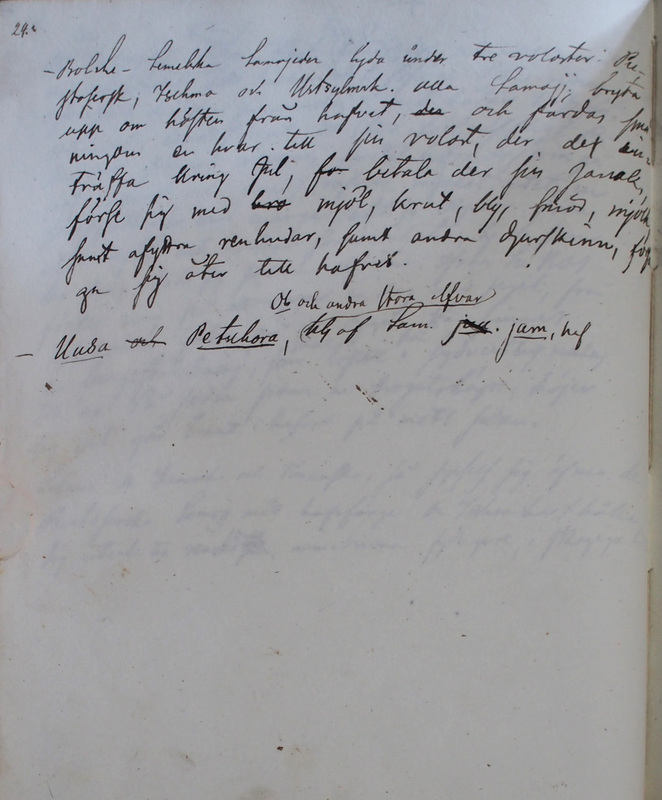Ethnographiska, historiska och statistiska anmärkningar. 024
Title
Ethnographiska, historiska och statistiska anmärkningar. 024
Description
| Bolshe-Semelska Samojeder lyda under tre voloster: Pu- stosersk, Ischma och Ustsylimsk. Alla Samojj[eder]. byta upp om hösten från hafvet, och färdas små- ningom en hvar till sin volost, der de träffa kring Jul; för betala der sin jasak, förse sig med mjöl, krut, bly, smor, mjölk, snart afyttra renhudar, samt andra djurskinn, förja- ga sig åter till hafvet. |
The Bolshezemelskaja Samoyeds are subject to three volosts: Pustozersk, Izhma, and Ustsylimsk. All the Samoyeds move away from the sea in the autumn, and travel little by little to their own volosts, where they meet around Christmastime, to pay there their yasak tax, provide themselves with flour, gunpowder, lead, butter, and milk, to quickly sell reindeer hides, as well as other animal skins, and return to the sea. |
|
Uusa och Petschora, Ob och andra strora elfvar kls[kallas] af Sam[ojeder]. jam, haf.
TN ям’ ʻsea’. As noted, the Nenets use ямʹ to refer to large rivers, e.g. Санэроʹʹ ямʹ (or Санэроʹʹ яха) ʻRiver Pečora’, Саля ямʹ ʻRiver Obʹ.
|
The Uusa and Petschora, Ob, and other great rivers are called jam ‘sea’ by the Samoyeds. |

